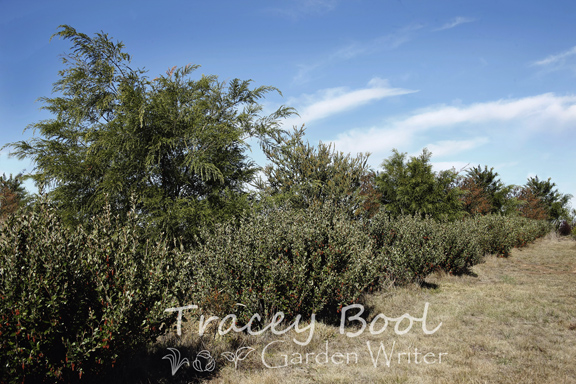|
Growing and Maintaining Windbreaks
(August 2016) With the arrival of winter and at times feral weather, it is worth thinking about planting windbreaks to protect your garden and home from climatic extremes. A windbreak can be created using plants, raised soil mounds or man-made structures such as brush or lattice fencing. The idea is to dissipate the wind’s velocity, not block it, as this causes turbulence on leeward side. A windbreak offers countless benefits including:
Before planting a windbreak, observe predominant wind directions at different times of year (or look online if you are in a hurry), and also be mindful of not blocking out both northerly and warming winter sunlight. Plants can throw quite a long shadow, particularly in the winter months when the sun is low in the sky. Plants selected should be resistant to tough climatic conditions, be relatively long-lived, have moderate to dense leaf habit from the base, and ideally, offer more than one function. For example, Feijoa sellowiana produces flowers and fruit, provides habitat for wildlife and is aesthetically pleasing. It is beneficial to initially intersperse windbreak with pioneer plants which fix nitrogen (such as Acacia species), as they offer protection and nutrition to the permanent planting while it is establishing. Using tree guards can also speed up establishment, especially at this time of year, as they offer glasshouse-like conditions. As a general rule space plants approximately one third of their expected width apart for good coverage. This isn’t as much of an issue if you are planting several rows in your windbreak. Plants need to be grown in nutritionally rich soil and reliably watered for at least the first couple of growing seasons to ensure they develop a strong healthy root system and bushy habit. Regular tip pruning when young will also help to create dense leaf growth, and is less stressful to the plant than harsh pruning when they are more established. If room is an issue you could use climbers, espalier, or grow ‘fedges’ (a living fence and hedge) to good effect. Make sure structural supports for these methods are sturdy and durable. |

